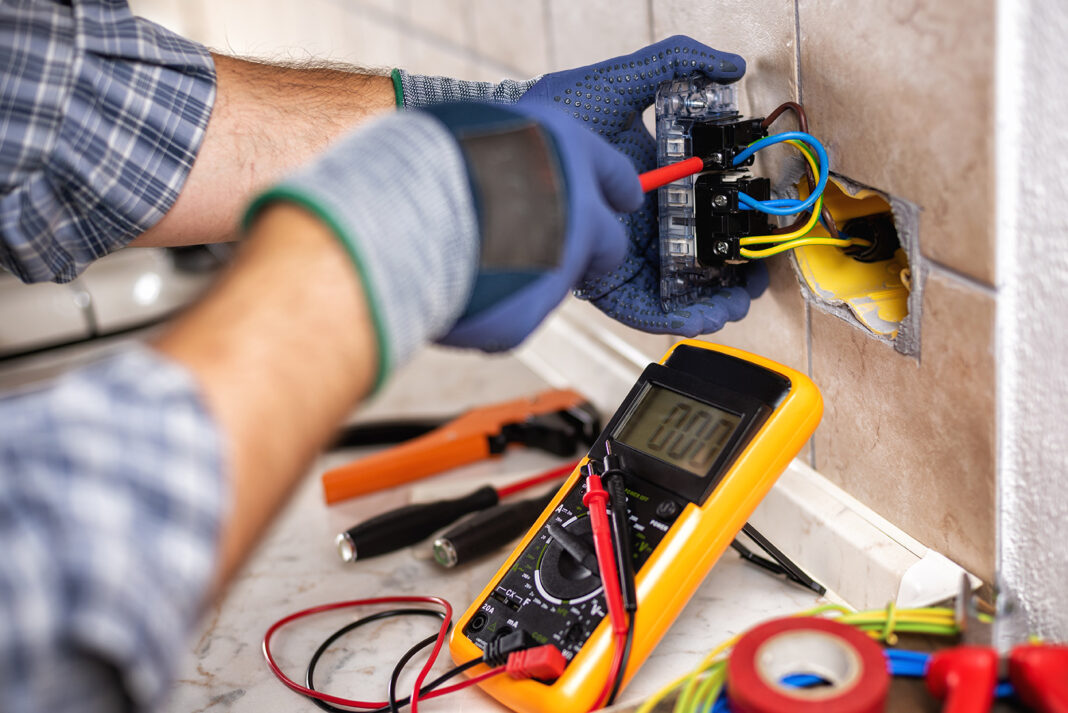Electrical installations are lifelines in homes that require ongoing assessments to confirm compliance and safety. While aesthetics entice homeowners, integrity safeguards lives. The Electrical Installation Condition Report inspects wiring, sockets, circuit breakers, and appliances, identifying potential dangers like faulty connections or inadequate grounding. Detecting issues precedes correcting them, elevating stability and security.
What is a Domestic EICR?
A domestic EICR for the home is a formal assessment of all electrical systems within a private residence, providing a comprehensive report on their condition and safety. This evaluation covers key components such as internal wiring, sockets, circuit breakers, and appliances.
Identifying potential electrical hazards is crucial, whether faults in hardwiring or insufficient grounding, to avoid severe dangers like electric shocks, fires, or even loss of life. Uncovering issues sooner allows homeowners to promptly remedy problems, strengthening the reliability and safety of their electrical infrastructure over the long run.
Regular inspections are legally required for landlords in the UK and a wise precaution for homeowners. Current regulations mandate that checks be conducted every five years minimum or whenever a new tenant moves in. Ensuring compliance with these standards can help avoid legal troubles and make living spaces safer for all those within.
Why is an EICR Necessary?
Safety is the key reason for acquiring an EICR. Electrical dangers can lead to intense outcomes, along with electric shocks and domestic fires. An EICR identifies prospective risks and guarantees that essential remedial actions are taken prior to an occurrence. Additionally, having an up-to-date EICR can positively influence home insurance policy costs, as insurance coverage providers typically consider conformity with safety standards, impacting coverage and cases in case of a mishap.
Furthermore, keeping electrical health and wellness with routine EICRs adds to the longevity of electrical installations. Promptly attending to issues can prevent bigger, pricier repairs down the line. For example, if an EICR subject has issues such as outdated wiring or overloaded circuits, taking actions to fix these troubles enhances safety and security and protects against even more significant electrical failures that could require thorough renovations or replacements. Prioritizing electric safety and security can assist in making sure residential properties remain in excellent condition, enhancing their worth gradually.
When Should an Electrical Inspection be Planned?
Understanding the appropriate timing for scheduling an EICR is essential for maintaining home security. Existing properties should receive these assessments no less than every five years, with flexibility depending on age and condition. Spaces or homes that have undergone significant electrical renovations or changes should also go through a comprehensive evaluation soon after completion of work.
Look for signs that may require an electrical safety review, such as:
- Circuit breakers repeatedly shut off, which can signal an overloaded or flawed system requiring immediate attention to prevent hazards.
- Lights are dimming or flickering unexpectedly, potentially revealing loose connections, defective wiring, or inadequate power supply, worthy of further investigation to ensure safety.
- Detecting peculiar odors near outlets or appliances like melting plastic may point to overheating, arcing, or a meaningful fire risk necessitating prompt focus.
What Does a Residential Electrical Inspection Entail?
The EICR process involves a complete inspection examining various aspects of the electrical system within a domestic property. Skilled electricians conduct these evaluations to guarantee that every infrastructure part functions correctly and safely.
Key components assessed during an EICR include:
Wiring integrity
This involves checking condition and installation quality throughout the home and looking for signs of deterioration, damage, or improper work that could cause short circuits or failures. Insulation around wires is also inspected to ensure they remain intact and prevent accidental contact with live electrical parts.
Condition of Fuse Boxes
The fuse box (or consumer unit), acting as the central distribution hub, is evaluated regarding age, corrosion, and functioning. An outdated consumer unit may lack essential safety features such as Residual Current Devices (RCDs), making it more vulnerable to electrical faults.
Functionality of Protective Devices
Protective devices like circuit breakers and fuses are tested to guarantee proper response to faults, preventing hazards such as electrical fires or shocks.
During an EICR, the examination includes visual assessment and thorough testing for IEE Wiring Regulations. Common areas inspected include:
- Sockets are inspected for indications of harm, deterioration, or improper installation. Any loose or cracked sockets might be flagged as potential risks, and tests will determine if they function properly under load. In some cases, sockets may be tested for grounding and polarity to guarantee safety.
- Light fittings and switches are examined for damage or decay, particularly in older properties where fixtures may have been in place for decades. Loose connections or exposed wiring can pose a significant danger and will be flagged for corrective action.
- Earthing systems are evaluated to ensure grounding integrity for all installations, preventing shocks and allowing protective mechanisms to operate as designed during faults.
- Hardwired fixtures also undergo checking to guarantee correct installation and operation without electrical risks, evaluating cookers, water heaters, and ovens for proper earthing and faults.
Each plays a vital role in overall electrical safety and functionality.
The Cost of an EICR Home Inspection
The price of an EICR can fluctuate subject to several factors, including the dimensions and style of the property, its era, as well as the intricacy of the electrical systems installed. Typically, homeowners in the UK can expect to pay somewhere between £120 and £250 for an EICR. Larger abodes or people requiring exhaustive inspections may incur greater expenses.
Consider variations in property measurements. For instance, a three-bedroom house necessitates more time for inspection than a studio flat and could uncover more complex wiring systems. It is crucial to solicit quotations from certified electricians familiar with current regulations. Choose electricians who furnish transparent pricing and can explicitly clarify the inspection scope, ensuring there are no unexpected costs during or following the inspection approach.
Understanding EICR Results and Ratings
Once the EICR is finished, the report will categorize the condition of the electrical installations into various ratings. These ratings indicate whether the systems are satisfactory, necessitate improvement, or pose a substantial safety risk. A satisfactory report signifies that electrical systems comply with safety standards and are safe for continued usage.
Swift corrective actions are critical if a property does not pass the inspection. If the report highlights major flaws, such as exposed wiring or insufficient earthing, it is imperative to engage a qualified electrician to rectify these issues. Skilled electricians can furnish recommendations for necessary repairs or upgrades. Addressing these issues improves safety and is vital in maintaining compliance with UK regulations.
Enhancing Home Design with Electrical Safety
Incorporating electrical safety into home design elevates both aesthetics and functionality. A well-thought-out electrical system enhances the usability of spaces, allowing for more effective lighting and power solutions without compromising safety. Electrical safety checks should be part of the planning process during renovation projects.
When updating a kitchen, collaborating with electricians to ensure that all sockets and appliances meet the required safety standards reduces risks associated with cooking. Similarly, outdoor lighting designs should account for weatherproof fittings and proper circuit protection to prevent hazards. Balancing beauty and safety is achievable through carefully selecting fixtures and strategically placing electrical outlets. Homeowners can achieve sophisticated designs while ensuring their electrical systems are reliable and secure, demonstrating that safety and style coexist.





